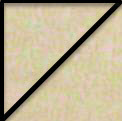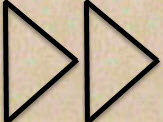House Rules - Combat
An enhanced set of rules for combat.
---------------------
Multiple Actions
This is the existing rule, but it needs mentioned as it has context with these rules.
Celerity, Rage actions, etc can not be split.
If you take 2 actions you lose 2 dice from the first dice pool and 3 from the second
If you take 3 actions you lose 3 dice from the first dice pool, 4 from the second and 5 from the third
If you are going to have 0 dice in any pool then none of the actions are possible
The actions can NOT be the same thing repeated, ie. you can NOT hit with your sword twice.
Some weapons, like guns and fists, have a rate. That is the exception to this rule.
If the rate is a fraction it is the opposite, eg. it costs 4 actions to fire a bow as the rate is 1/4
A complex Example
Leaping onto a chandelier, swinging accross and dropping into a foe, kicking him in the face while parrying his mate
That is a 3 action movement, the swing is -3dice + dex+ath(7) - +1TN to grab the rope on the fly,
the drop is a free action, the parry is -4dice + dex+mel(6), the kick is -5dice + dex+bra(6)
That action is declared as initiative is rolled and jotted onto a piece of paper.
If the actions are all 1d or more the action is performed
If the character takes damage before the action is taken and suffers wound penalties that change this then that portion of the action is disallowed.
Normally if wound penalties cause a dice pool to be below 1d the character would roll 1d. That can only happen for 1 action in a round.
So if all of the actions are less than 1d after wound penalties, 1 of those actions can still be made. In this example the player would be allowed to cancel the entire thing however they would not be offered a replacement action.
A willpower can always be spent to do something defensive instead of the declared action, that is moving out of the way, dodging or parrying the attack.
---------------------
Combat map movement
On a battle map the base movement is 4 squares, you can also run for 7 or 8 squares depending on your dex but it counts as an action. Running and attacking is therefore -3d to the attack because the first action was running.
Moving diagonally on a square grid map is free for the first diagonal move, then costs double for the next, free for the third, double for the fourth and so on.
---------------------
Parrying
Parrying reduces the successes made to hit, it is a Dex+Melee(6) roll.
If you earn more successes than the attacker, you may make an attack using the successes that you have over the attackers successes as a dice pool.
---------------------
Dodging
Dodging reduces the successes made to hit, it is a Dex+Dodge(6) roll.
If 5 successes are gained, you may take a free 10' leap. If this removes you from reach the attack is cancelled.
---------------------
Blocking
Blocking reduces the successes made to hit, it is a Dex+Melee(6) roll.
Blocking is usually done with a shield or when wielding 2 weapons.
---------------------
Two handed strike with a one handed weapon
Any weapon that is not normally 2 handed to use can be used to make a 2 handed attack at +1TN for +1 Damage
---------------------
Called shots
A called shot can be made to either disable a single limb, disrupt the opponent in some way or to cause more damage.
If more damage is the goal increase the to hit roll by +2TN and increase the damage by +2 Damage
If a limb is disabled, it is temporary, a weapon might be dropped, the opponent might trip over, etc. This is +2TN
A strike to the heart is +2TN, if it is a wooden arrow and it causes at least 1 damage after soaking the vampire is staked
---------------------
Fitting Armour
Armour not fitted can sometimes be an additional -1Dex, this does not apply to light armours and armours that are mass produced.
Making an armour fitted that is not normally fitted, like a light armour can sometimes reduce the dex penalty. That same dex penalty then applies to anyone who wears it other than you.
---------------------
Layering Armour
Layering armour costs an additional -1dex but can be useful as it is a convenient way of making heavy armour out of mass produced units quickly
---------------------
Making Armour
There are 3 categories for armour; Bashing, Lethal and Ballistic/Archery
This is often written as -1Dex, B1, L0, A1 or simply -1Dex, 1, 0, 1
NOTE: Arrows and crossbow bolts are soaked by ballistic armour
The maker designs the armour and the ST and the maker agree the look and materials required
1-2 Pt - Armour that is built from the following arrays in any sequence of 2,0,0 or 1,1,0 or 1,0,0 has no Dex penalty
3-4 Pt - Armour that is any combination of 3,0,0 or 3,1,0 or 2,2,0 or 2,1,1 or 2,1,0 has a -1Dex penalty
5-6 Pt - Armour that is any combination of 4,2,0 or 4,1,0 or 4,0,0 or 3,3,0 or 3,2,1 or 3,2,0 or 3,1,0 or 2,2,2 or 2,2,1 has a -2Dex penalty
7-8 Pt - Armour that has a maximum of 5 in one column but has 7 or 8 points in total, eg, 3,3,2 has a -3Dex penalty
9-10 Pt - Armour that has a maximum of 6 in one column but has 9 or 10 points in total, eg, 4,3,3 has a -4Dex penalty
---------------------
Common Armours of note
Compression Armour - medicine checks are -2tn when attempting to stabilise or apply first aid, -1Dex, 1, 1, 0
Pourpoise chest guard - worn under the cuirass or breastplate, densely packed straw that makes the wearer look a bit like a peacock, -1Dex, 0, 0, 2


